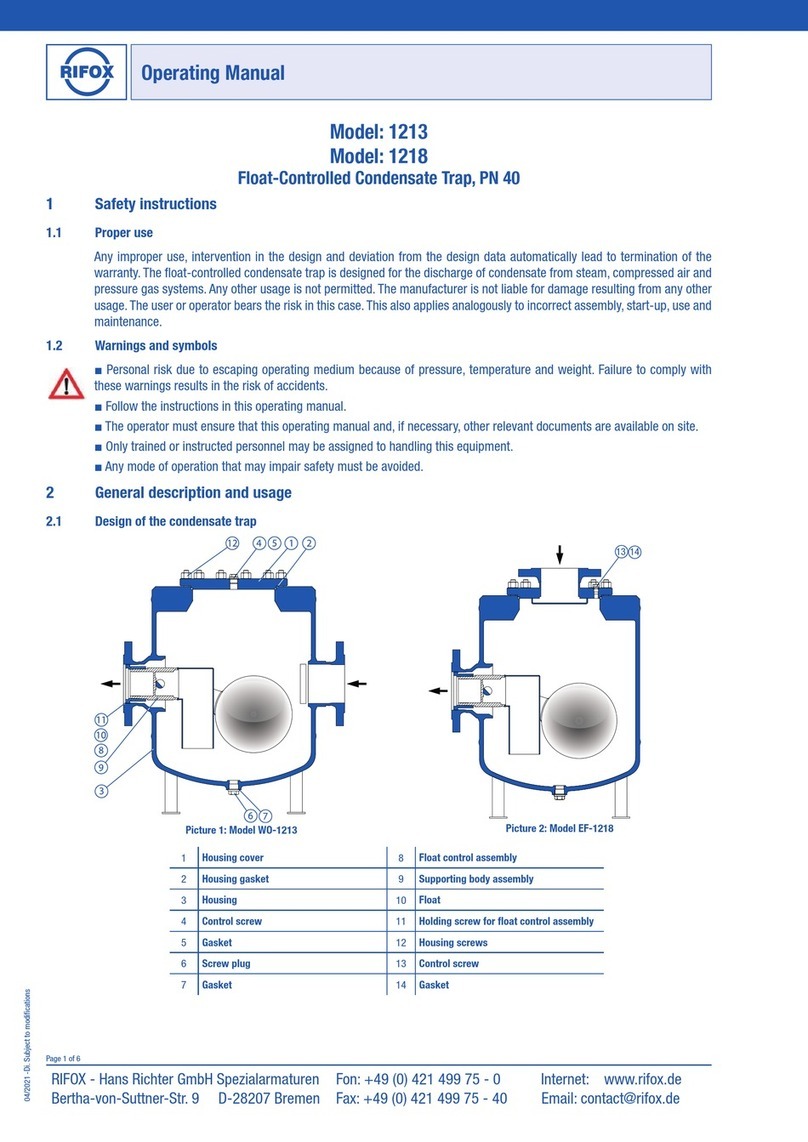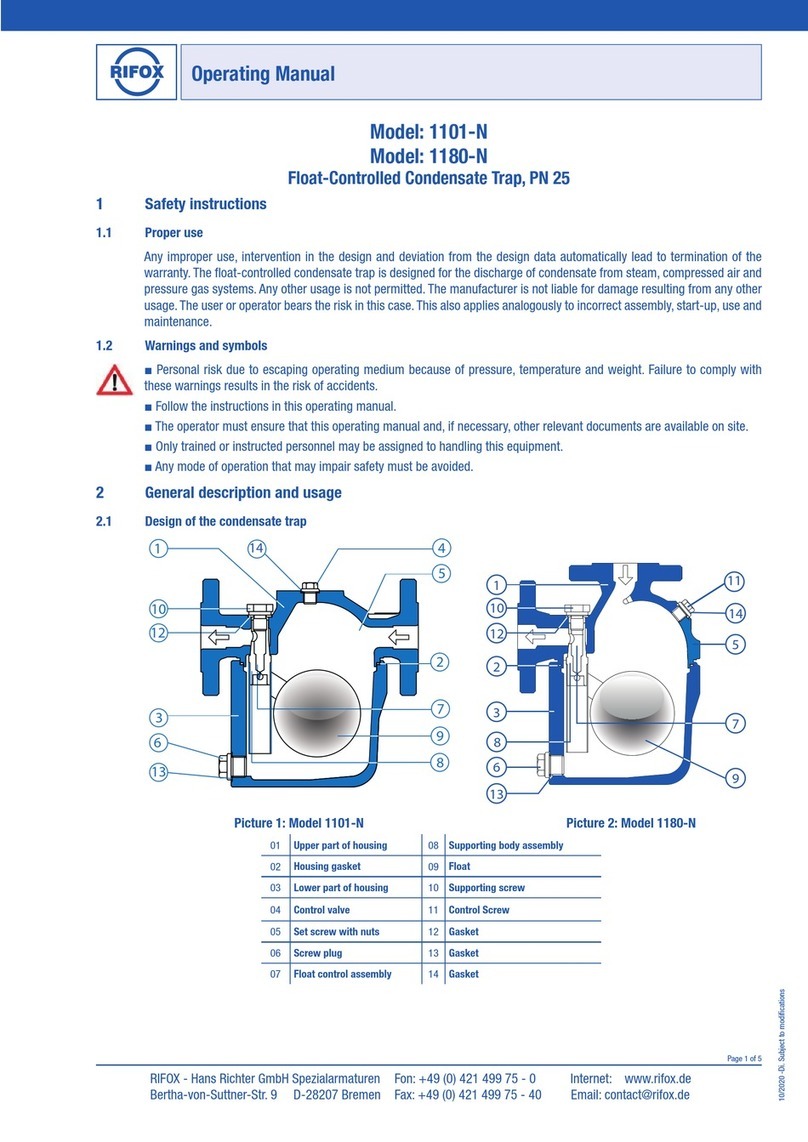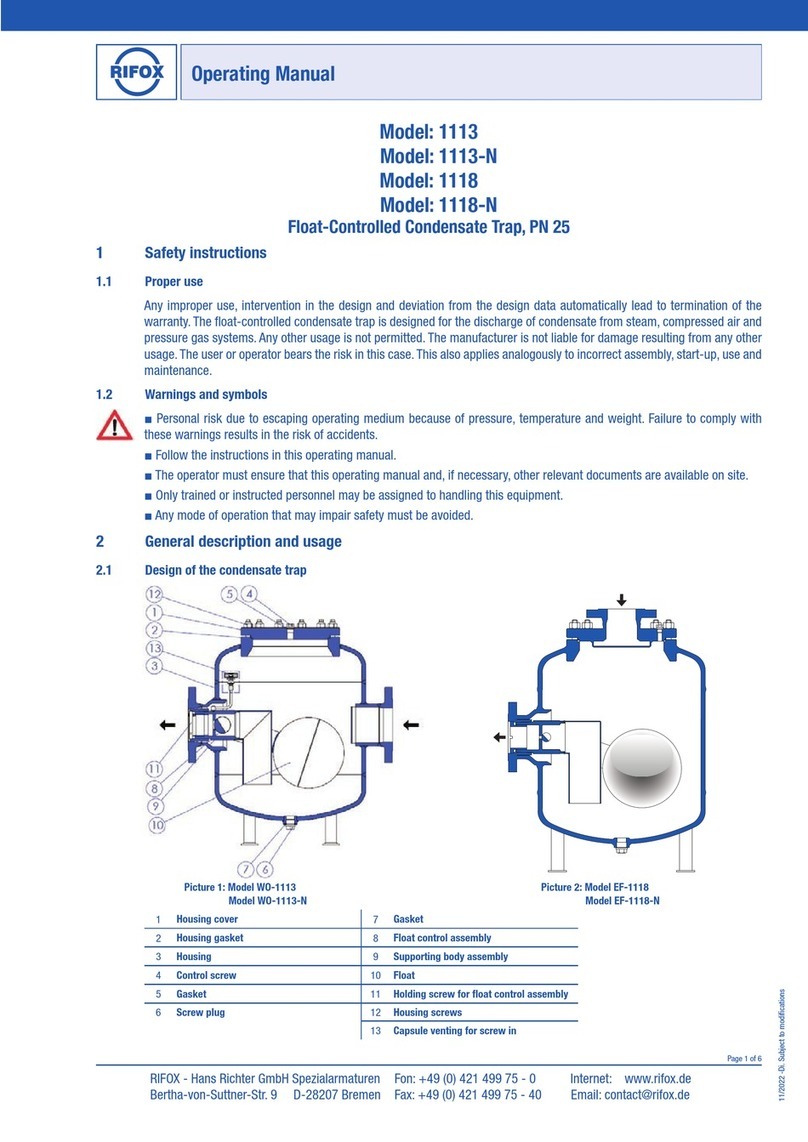
Operating Manual
RIFOX - Hans Richter GmbH Spezialarmaturen
Bertha-von-Suttner-Str. 9 D-28207 Bremen
Fon: +49 (0) 421 499 75 - 0
Fax: +49 (0) 421 499 75 - 40
www.rifoxglobal.com
Breite: 170
Höhe:8,15
Oben Links
278,5 20
Page 3 of 5
01/2017 -Di. Subject to modifications
3 Assembly
■The condensate trap has to be screwed into a pipeline between flanges.
■Remove transport caps from inlet and outlet.
■Fitting direction: according to Picture 1 and 2.
■Supporting brackets: The supporting brackets are not necessary if the pipeline is adequately supported before and after
the condensate trap. The condensate trap weights from 10 to 28 kg, depending on the connection sizes.
■To avoid downtimes, it is recommended to install stop valves with bypass to pipeline, both in front of and behind the con-
densate trap.
4 Start-Up
The pressure build-up and heating-up of the housing should not take place abruptly. If leakage is detected after the first
inspection, the screws (4 / 6 / 7 / 9) can be fixed under consideration of the given torque moments, as given in Section 6.5.
The screws can only be tightened on when the housing is unpressurized and at room temperature.
5 Observation and control
The function’s failure can be observed either as condensate blockage or as gas/ steam leakage.
■Condensate blockage can be determined by a): loosen the control screw (4) for a quarter rotation, while no condensate
leakage should occur; and by b): a surface thermometer on the housing for steam applications (if necessary, please consult
with Rifox).
■Gas / steam leakage: can be determined by an ultrasonic measuring device, and for steam applications by a surface
thermometer. In case of steam leakage, open the condensate trap according to Section 6.1. Make sure that float can be easily
moved. If necessary, disassemble and clean the float control assembly (11). If damages/ wears are detected on parts or on
the sealing surface, the complete float control assembly (11) should be replaced.
6 Maintenance / Inspection
6.1 Opening the steam trap and dismantling the float control
■The steam trap must be depressurized. Shut off the system securely in front of and behind the steam trap.
■Release any remaining pressure in the housing by loosening the control screw (4) by only a quarter turn.
■Loosen the housing screws (6) evenly crosswise. Put down the housing cover (1).
■Loosen the supporting screw (9) and unscrew it for 1 - 2 turns.
■With a few light strokes using plastic hammer on the front side of the supporting screw (9) to loosen the float control as-
sembly (11) from its conic housing seat.
■Screw out the supporting screw (9) completely. Remove the float control assembly (11).
6.2 Disassembling, cleaning and assembling the float control (Picture 4)
■After removing the cotter pin (p), the rotary valve (v) can be simply pulled out
to the side.
■Clean the parts using, for example, benzine.
■Check the rotary valve (v) for wear along the sealing edge. If wear is detected,
the support body (b) together with the rotary valve (v) must be replaced. The
thorough leakage test must be carried out by RIFOX.
■During assembly ensure that the notch in the rotary valve (v) points to the
punch mark on the support body (b) and the cotter pin (p) is inserted and secured
again carefully.
■It must be possible to move the float up and down easily by hand.
bpv
Picture 4


























